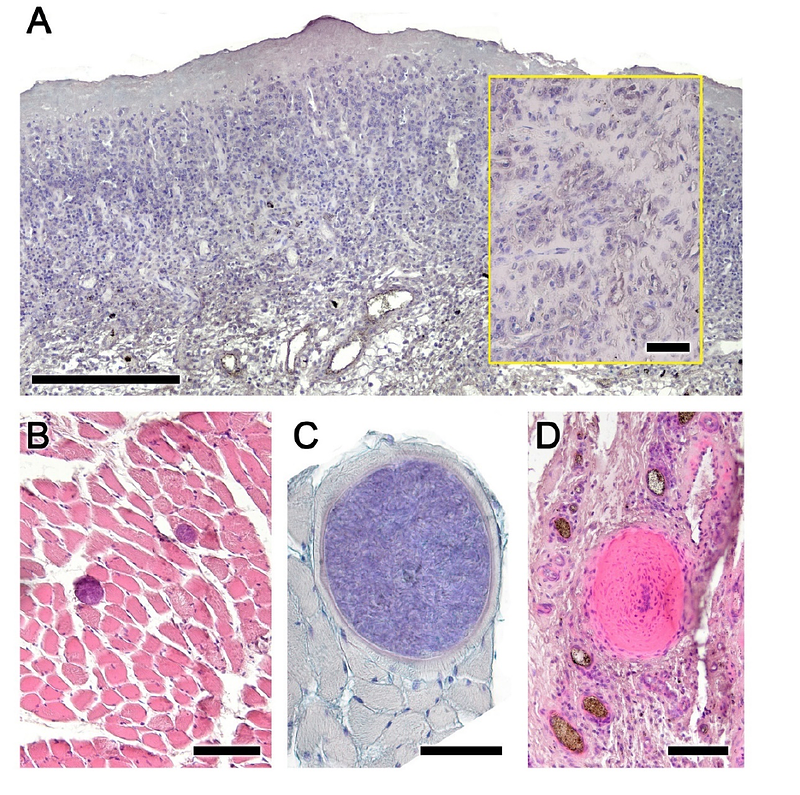The Histopathology of Cephenemyia stimulator-Induced Nasopharyngeal Myiasis in Roe-Deers (Capreolus capreolus)

The Histopathology of Cephenemyia stimulator-Induced Nasopharyngeal Myiasis in Roe-Deers (Capreolus capreolus)
Ortiz-Leal, I.; Torres, M. V.; Lopez-Beceiro, A.; Sanchez-Quinteiro, P.; Fidalgo, L.
AbstractNasopharyngeal myiasis in European roe deer (Capreolus capreolus) is a pathological condition caused by the larval stages of Cephenemyia stimulator, a fly from the Oestridae family. These larvae reside in the host\'s upper respiratory tract for months, inducing significant tissue damage and clinical symptoms. The lifecycle of Cephenemyia stimulator is complex, involving three larval stages before maturation into adult flies, with each stage contributing to the progressive pathology observed in the host. Despite their prevalence, the histopathological effects of these larvae in the nasopharyngeal and nasal cavities have been understudied. Our study fills this knowledge gap by providing a detailed histopathological analysis of the affected tissues, using various staining techniques to reveal the extent and nature of the damage caused by these parasitic larvae. This histopathological examination reveals significant alterations within the nasopharyngeal mucosa and nasal cavity, including erythematous changes, mucosal metaplasia, fibrosis, and tissue necrosis. Parasitic cysts and eosinophilic infiltration further characterize the infestation\'s impact, compromising not only the mucosal integrity but also potentially the olfactory function of the affected animals. This research is crucial for understanding the impact of myiasis on the health of roe deer populations and could have significant implications for wildlife management and conservation.